Whenever I think about Minneapolis, I always imagine the streets dark and covered, every square foot of them, with packed snow.
The first time I visited the Twin Cities, or even set foot in Minnesota, was in February of 1996, and it was the first time I had ever seen a major urban area simply give up on trying to keep the streets clear during winter and let the snow just pack down until it was drivable, if perhaps not something you would want to go too fast on.
It was my first year of graduate school at the University of Iowa, and, more relevantly, in the middle of the organizing campaign that established UE Local 896 as the union for graduate workers there. I had been bit by the union-organizing bug, hard, and had come up to Minnesota to attend the “Meeting the Challenge” labor conference held at Macalester College in St. Paul.
I had talked two of my college friends, who were still undergraduates at the nearby liberal arts college I graduated from, into driving up with me. This was in large part, I think, because I had secured housing with a woman, K, whom we had all met on a spring break adventure in Kansas the previous year, and whom I suspect we all had a bit of a crush on. She was now in grad school at the University of Minnesota. They were planning to hang out with her while I attended the conference.
After picking my friends up on their campus, which lay a bit north of I-80, I perhaps somewhat recklessly decided that, instead of driving back south to 80 and taking it west to Des Moines, where I-35 would take us north to the Twin Cities, we should take the two-lane Iowa Route 146 north towards Marshalltown instead.
We quickly got lost. I probably had an atlas in my car, but that is not much help when the roads you are on have few markers. But fortunately, it was still light out, and the roads in Iowa are, for the most part, laid out in a north-south, east-west grid. Navigating by the setting sun, we headed north, then west, then north, then west again, repeatedly, past snow-covered corn and soy fields, until we finally found 35, which delivered us safely to K’s apartment.
Almost a decade later, I was in Minneapolis with my kids for a week in late February. Thanks to the internet, I had recently reconnected with an old high school friend, then living in Des Moines, and she and her daughter — who was right in between my kids’ ages — drove up and the five of us hung out over a couple of days.
I don’t remember if it was snowy but it was definitely cold. Fortunately, Minneapolis is built for winter. We found an indoor playground on the west side of town where the 4, 5, and 6-year-old could play while we caught up. We hung out at the heated indoor pool at the hotel where she was staying, while the kids swam. And we went to the Minneapolis Institute of Art, where we wandered through an exhibit of Dale Chihuly’s works in glass, which are kind of like illustrations from a particularly trippy children’s book come to life, or at least made manifest in three dimensions. Each one of them is a thing that, before you see it, you wouldn’t have been able to imagine, but now that it is here, physically, in front of you, overwhelms you with both its wonder and its obvious, now that you see it, possibility.
On my way home from that trip, during which the kids and I had the dubious pleasure of spending 36 hours or so in the Detroit airport thanks to the weather, I wrote:
Minneapolis is snow and hope and danger. The late, great [U.S. Senator] Paul Wellstone beat an incumbent Republican with little more than pluck and brains and a working-class program, served two terms as the conscience of the Senate and then was killed in a plane crash in a storm. Several weeks ago, the centerpiece of Garrison Keillor's Prairie Home Companion monologue was the lesson he learned growing up in Minnesota: winter is no time for caution; winter is for danger and for taking risks.
Earlier this month, Bob Mould, who got his start in music as the guitarist and frontman of the Minneapolis hardcore band Hüsker Dü, released his 15th album, Here We Go Crazy. He describes it as “guitar pop,” but, being Bob Mould, it is a pretty heavy version of “pop.”
In describing one of my favorite songs on the album, “Fur Mink Augurs,” Jono Coote writes at When the Horn Blows, “The song aims to capture the cabin fever-ish depths of a North American winter, that buzzing off kilter energy which so informed Hüsker Dü’s paranoid ferocity.”
I hadn’t made the connection between Hüsker Dü’s “paranoid ferocity” and the Minneapolis winter before, but it instantly made sense. A few days ago I flipped through my copy of Bob Mould’s 2011 autobiography, See a Little Light: The Trail of Rage and Melody, to see if he mentioned the weather at all. He didn’t, but I suppose that isn’t too surprising — when Mould moved to the Twin Cities to attend Macalester College he came from Malone, New York, in the upper reaches of the Adirondacks, so I suppose the winters were probably no big deal for him.
What I was struck by was his description of some of his fellow students in the early 80s: young conservatives, newly empowered by Reagan’s election, strutting around the campus like they, now, owned the place. All of a sudden, it was their country, and none of the rest of us belonged.
I flew up to Minneapolis this past Tuesday. I have to be here this weekend for the UE Western Region council meeting, which started yesterday and concludes today, but it’s been a while since I’ve been here, so I decided to come up early, get an Airbnb, work remotely, connect with some old comrades, and see the cities. (Sadly, I came down with a nasty virus shortly after arriving, so have spent most of the last few days lying in bed in that Airbnb and then the council hotel.)
My Airbnb was in the “Warehouse District,” which now seems to be mostly full of beauty-supply and home-furnishing stores. Many of the two- to four-story brick warehouse buildings that give the district its name have been replaced by new, modern blocks of faux-luxury apartments that promise “urban living” (including the one my place was in), but there are still plenty of brick walls bearing the faintly painted traces of their wholesale past on the walls, advertising “Appliance parts — Parts for all makes! — Washers — Dryers — Ranges” or “Hardware — Auto supplies — Home appliances.”
The Warehouse District, then known as the Market District, was the epicenter of the great Minneapolis Teamster strike of 1934, which broke out on May 16. Along with the West Coast longshore strike, which began a week earlier on May 9, and the Auto-Lite strike in Toledo, which began in April, these strikes, four and a half years into the Great Depression, served notice that the working class was no longer willing to tolerate whatever conditions the bosses saw fit to impose on them. They helped convince John L. Lewis, the president of the United Mine Workers, that the time was ripe to organize America’s mass production industries, and thus laid the basis for the rise of the great industrial unions of the CIO — the United Auto Workers, the United Steelworkers, and my own union, UE.
In particular, the Minneapolis strike broke the power of the “Citizen’s Alliance,” a group of employers and wealthy citizens who had maintained Minneapolis’s status as an “open-shop” (i.e., non-union) city, often through use of violence, knowing that the courts and the police would look the other way while they beat or shot at workers.
None of these strikes were spontaneous — they were all the product of careful, focused organizing, by skilled organizers who were in it for the long haul — but they also owed their success to a general mood that people weren’t going to take it any more, that the employers no longer owned the place, at least not completely. That winter may have been long and hard, but it is time now for spring.
It's been a while since I made a playlist for this newsletter, so here’s one for your listening pleasure:
While in Minneapolis this past week, I walked by First Avenue, a music club which ranks up there with CBGC’s and Max’s Kansas City as one of the most important clubs for the last half-century of popular music. It is where Prince’s film Purple Rain was filmed, and was also important for launching the careers of Hüsker Dü, the Replacements, and many other Minneapolis acts.
The outside wall of the club is painted with stars memorializing the acts that have performed there. I don’t know if, say, New Order really cared, but according to Mould’s autobiography, for Minneapolis bands, getting a star at First Avenue is the ultimate sign that you have arrived, that your home city has accepted you and recognized your achievements.
Anyway, I stopped by to pay my respects:
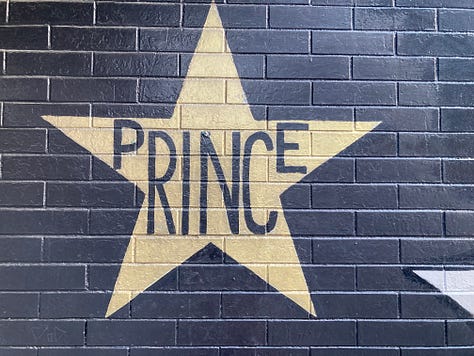
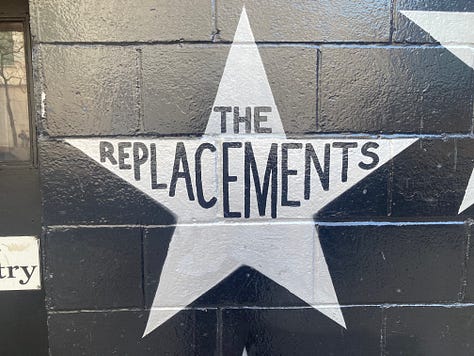

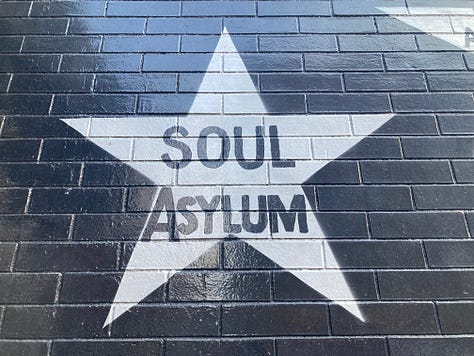
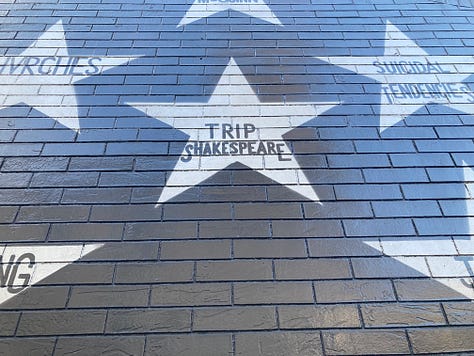
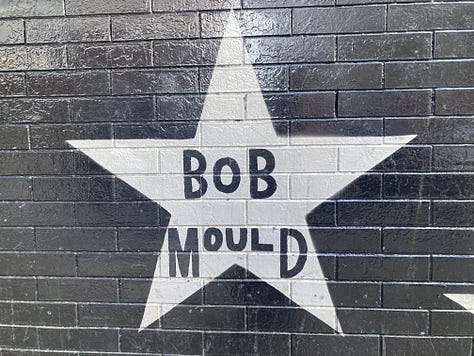
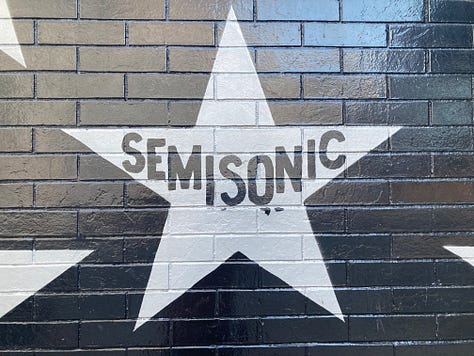
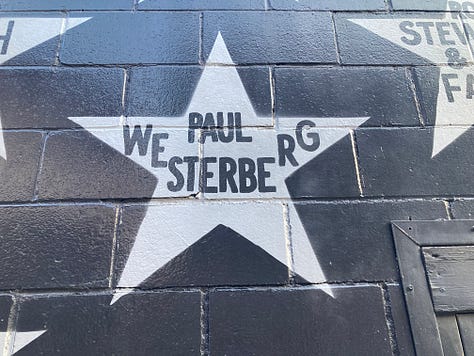
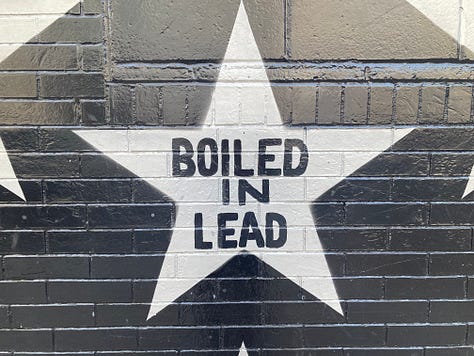
Next week I am going to be in one of the other great Midwestern cities, Chicago, for the Organization of American Historians conference, where I will be presenting at a panel on David Montgomery. If you’re in Chicago (or attending the OAH), drop me a line — I would love to meet any readers who are interested in getting coffee or a beer. Also, as I mentioned a few weeks ago, I’ll be driving, so any suggestions for things or people to stop and see en route between Pittsburgh and Chicago — especially in or near Cleveland or Toledo, where I will be stopping for various reasons on my way there — would be most welcome.
This will probably only be of interest to a relatively small slice of my readers, but one of the work projects that has been taking up a lot of my time and energy finally reached fruition this past week. Member-Run Unions is a new UE publication which breaks down in detail how our philosophy of rank and file control is best implemented in the day-to-day work of our union: bargaining contracts, fighting grievances, and running the union in a democratic fashion at the local, regional and national levels. It also includes numerous practical suggestions for how rank-and-file members can plug into the work of running their union.
In addition to (re)writing it — it is in large part based on a similar 2008 publication — I did all the design and layout, dealt with all of the logistics of getting it printed, and created a web version. I am glad it is finally out there is the world, but even more so, glad to be done with it.







Another great substack covering all things Minneapolis.
Great playlist!